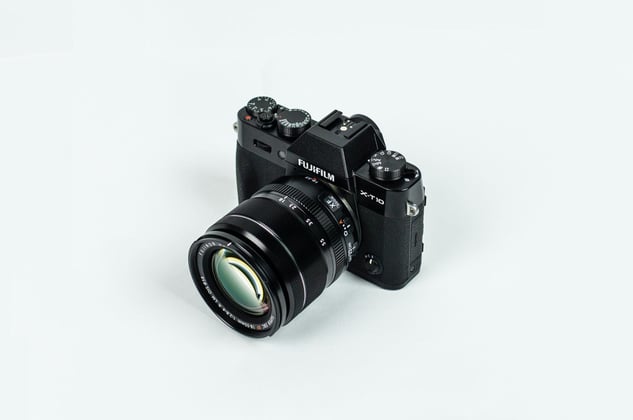Listen to the article
10 Common Photography Mistakes People Make When Listing Rentals
Do you shop more online or in-person? We’re willing to wager you often start your shopping journey online (like us). So do renters. So avoid these photography mistakes
The first place that your renters will see your property is online. Without standout photography, your property will be skimmed over and ignored.
Many real estate photographers make the same mistakes over and over again. We’re outlining the 10 most common real estate photography mistakes and how to avoid them.
1. Close-Up Shots
It’s a common misconception that showing off a property’s best features means you need to take lots of close-up shots. The reality is, close-up shots make rooms look smaller and are repetitive.
Have you ever looked at a listing and found a series of close-up shots of the baseboard heater, the inside of a closet, the kitchen cabinets, or other oddities? While the intention is likely to show the condition, age, or essential information about the property, the result for the viewer is boredom. Renters want to see the photos that show the layout and feel of the home, not the dull details. The brand of the refrigerator can wait until you’re closer to signing a lease.
2. Mirror Flashes
Flashes in a mirror are distracting to viewers. While it may be difficult to avoid the mirror when photographing bathrooms and other tight places, there is a way to combat the effect. If a mirror is in the shot, use a professional photo editor to remove the photographer and the flash from the picture.
3. Cluttered Spaces
If the popularity of the Home Edit and Spark Joy has taught us anything, it’s that people like a tidy space. Photographs of cluttered areas will turn off potential renters.
When you’re scheduling photography in an occupied home, ask residents to remove nonessential items within the shot. For example, photos with family pictures, an overflowing hamper, or an abundance of knickknacks will feel uninviting and make it difficult for renters to picture themselves in the home.
Pro tip: Use a pre-photo-shoot checklist to prepare the space to be photographed.
4. Different Orientations
Photos should not look like they were taken on a phone and without a plan.
A clear indicator that photos were an afterthought is when they are both vertically and horizontally oriented. Keep it consistent, and stick to horizontal shots, which lend themselves best to real estate. If a photo needs a vertical orientation, upload it correctly, so it isn’t sideways.
5. Featuring Sensitive Items
Photographing occupied homes has its challenges. One challenge is sensitive items that might attract thieves or fraud. Real estate photographers should avoid license plates, personal photos, rare art, and jewelry in photographs. If, for example, you’re taking an exterior shot and get a car license plate in the photo, make sure to blur it before posting.
An added bonus if you decide to follow tip #3 and declutter the space so that bills or other important documents won’t be visible in the photographs.
6. Using Outdated Photos
Some rentals can sit on the market for a while, which means the photographs might need to be updated. If you renovated the property, be sure to include photographs that reflect the improvements. You will likely be able to lease the property more quickly and for a more lucrative rental price if you do.
Additionally, if seasons change, update the exterior photo. You don’t want it to be obvious that your property has been on the market since December — with holiday decorations on the front door and snow on the lawn — when June rolls around.
7. Blurry Photos
Photos need to look professional. If they come out blurry, retake them. Blurry photos discredit the home, property manager, and everyone else involved. Plus, properties with poorly taken photos often take longer to get leased, resulting in reduced income for property owners.
8. Lack of “Coming Soon” Photos
Coming soon listings allow you to pre-market a property. Adding coming soon photos provides a significant marketing benefit to property owners. Zillow lowers the ranking of listings without coming soon images, making it more difficult for renters to find them.
Many property managers and investors opt out of coming soon photos because they don’t have good shots, but virtual tours can resolve this efficiently. You can use PlanOmatic to create a Matterport virtual tour while preparing the property for rental. Then you can use the tour and the stills in your coming soon photos, providing an accurate view of the property.
9. Over-Styling Photos
Have you ever seen a rental listing photograph that looks like a rendering because the photographer styled it? We have, too, and it makes it hard for renters to see themselves in the home.
The biggest ill-conceived style choice we see is the use of a fisheye lens. It creates a bowed viewpoint like you’re looking through a peephole. The distortion makes it impossible to understand the accurate layout of the room.
Color correcting, editing, or removing items is acceptable, but adding a sepia filter is not.
10. Adding Time Stamps
Timestamps date photographs and should be avoided. Timestamps were once popular, and many property owners still use them in their listings, but you shouldn’t.
Most investors reuse photographs unless they have recently renovated property. Timestamps on reused photographs make renters leery of what the property looks like today.
Your future renters are likely real estate shopping online right now. By avoiding these common real estate photography pitfalls, you’ll help your property shine, and give it the best chance of getting leased quickly.






